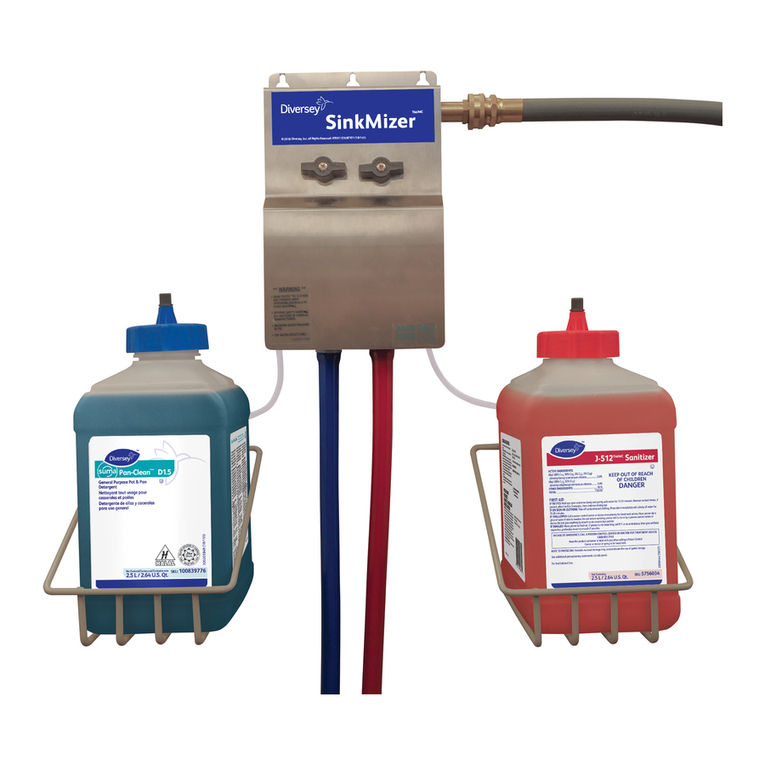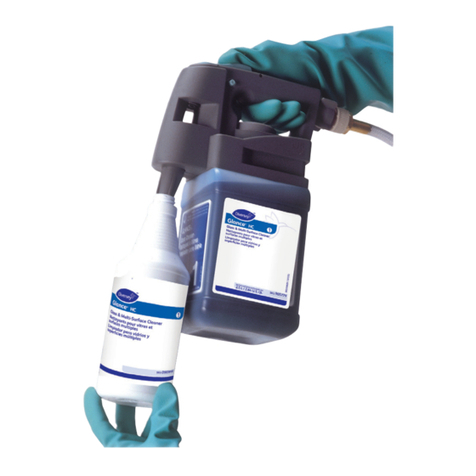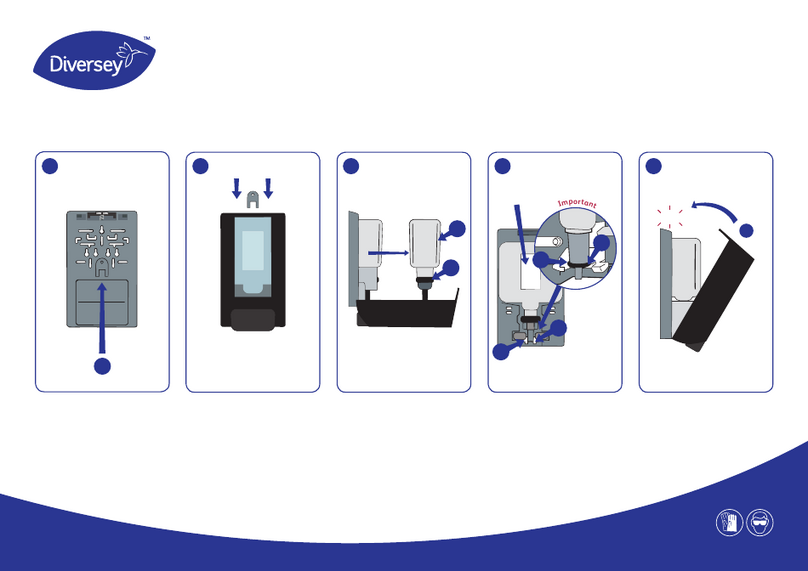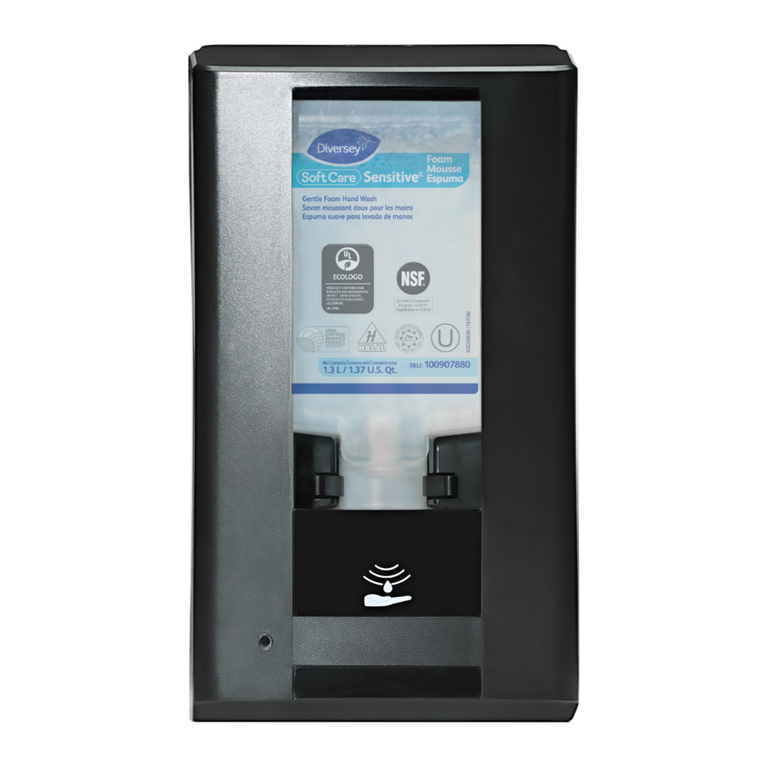
Installation & Setup Guide
DE1548 INT issB s1 July 2012
Safety
Always wear the required Personal Protective Equipment (including gloves and goggles that must be worn when
potentially exposed to any hazardous materials and when carrying out hazardous work tasks). Turn the
dispenser off during cleaning and note that parts may be contaminated with product. If possible, flush tubing out
with water prior to carrying out any maintenance. For information on products that are used in this dispenser,
please carefully read the product label and Material Safety Data Sheet (MSDS).
Installation Standards
Ensure that the unit is always installed in accordance with the Diversey “General Standards of Installation” guide
(Ref. JDE1537) and meets local regulatory requirements.
Any specific installation recommendations relating to this unit are explained in this Installation and Setup Guide.
Specifications
Dimensions/Weight
(Dimensions do not include fitting
or solution “break” tube)
Operating Parameters
thin chemical at
2.5bar
Gap*
1.0 bar
(14.5 PSI)
5.5 bar
(80 PSI)
65°C
(149°F)
3.2:1
560:1
(14.5 psi)
0.85 GPM
(80 psi)
2.1 GPM
(36 psi)
1.4 GPM
Gap*
1.0 bar
(14.5 PSI)
5.5 bar
(80 PSI)
65°C
(149°F)
5:1
800:1
(14.5 psi)
2.1 GPM
bar (80 psi)
5.2 GPM
(36 psi)
3.4 GPM
Gap
1.5 bar
(22 PSI)
5.5 bar
(80 PSI)
65°C
(149°F)
2.7:1
490:1
(14.5 psi)
0.68 GPM
(80 psi)
1.4 GPM
(36 psi)
0.95 GPM
Gap
1.5 bar
(22 PSI)
5.5 bar
(80 PSI)
65°C
(149°F)
5:1
800:1
(14.5 psi)
1.5 GPM
bar (80 psi)
4.68 GPM
(36 psi)
3.25 GPM
Installation
Open the QFM by inserting the “C”- shaped steel clip into the front cover then lift cover upward. The cover will
only come away completely from the backplate when it is pulled up by an angle of 45°. (Fig 1.1)
Fig 1.1



























